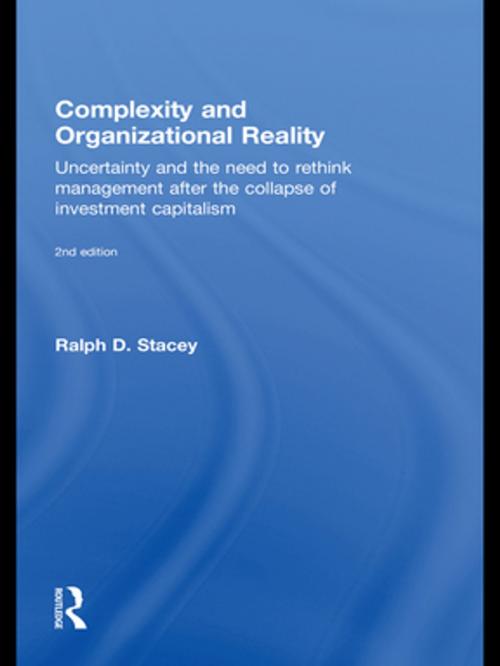Complexity and Organizational Reality
Uncertainty and the Need to Rethink Management after the Collapse of Investment Capitalism
Business & Finance, Human Resources & Personnel Management, Organizational Behavior, Management & Leadership, Management| Author: | Ralph D. Stacey | ISBN: | 9781135188665 |
| Publisher: | Taylor and Francis | Publication: | December 18, 2009 |
| Imprint: | Routledge | Language: | English |
| Author: | Ralph D. Stacey |
| ISBN: | 9781135188665 |
| Publisher: | Taylor and Francis |
| Publication: | December 18, 2009 |
| Imprint: | Routledge |
| Language: | English |
Approaches to leadership and management are still dominated by prescriptions – usually claimed as scientific – for top executives to choose the future direction of their organization. The global financial recession and the collapse of investment capitalism (surely not planned by anyone) make it quite clear that top executives are simply not able to choose future directions. Despite this, current management literature mostly continues to avoid the obvious – management’s inability to predict or control what will happen in the future. The key question now must be how we are to think about management if we take the uncertainty of organizational life seriously.
Ralph Stacey has turned to the sciences of uncertainty and complexity to develop an understanding of leadership and management as the ordinary politics of daily organizational life. In presenting organizations as a series of complex responsive processes, Stacey’s new book helps us to see organizational reality for what it actually is – human beings engaged in many, many local conversational interactions and power relations in which they negotiate their ideologically based choices. Organizational continuity and change emerge unpredictably, rather than as a result of any overall plan. This is a radically different picture from the one painted by most of the management literature, which explains "organizational continuity and change" as the realization of the global plans and choices of a few powerful executives within an organization.
Providing a new foundation for understanding complexity and management, this important book is required reading for managers and leaders wanting to understand the reality of complexity in organizations, including those engaged in postgraduate studies in leadership, organizational behaviour and change management.
Approaches to leadership and management are still dominated by prescriptions – usually claimed as scientific – for top executives to choose the future direction of their organization. The global financial recession and the collapse of investment capitalism (surely not planned by anyone) make it quite clear that top executives are simply not able to choose future directions. Despite this, current management literature mostly continues to avoid the obvious – management’s inability to predict or control what will happen in the future. The key question now must be how we are to think about management if we take the uncertainty of organizational life seriously.
Ralph Stacey has turned to the sciences of uncertainty and complexity to develop an understanding of leadership and management as the ordinary politics of daily organizational life. In presenting organizations as a series of complex responsive processes, Stacey’s new book helps us to see organizational reality for what it actually is – human beings engaged in many, many local conversational interactions and power relations in which they negotiate their ideologically based choices. Organizational continuity and change emerge unpredictably, rather than as a result of any overall plan. This is a radically different picture from the one painted by most of the management literature, which explains "organizational continuity and change" as the realization of the global plans and choices of a few powerful executives within an organization.
Providing a new foundation for understanding complexity and management, this important book is required reading for managers and leaders wanting to understand the reality of complexity in organizations, including those engaged in postgraduate studies in leadership, organizational behaviour and change management.















